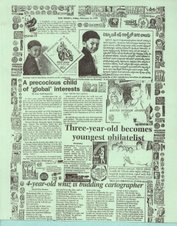
Old Akkadian, which was used until the end of the third century BCE, differs from both Babylonian and Assyrian; and was displaced by these dialects. The two dialects, which were to become the primary dialects, were easily distinguishable by the 21st century BCE. Old Babylonian, along with the closely related dialect Mariotic, is clearly more innovative than the Old Assyrian dialect and the more distantly related Eblaite language. For this reason, forms like lu-prus (I will decide) are first encountered in Old Babylonian instead of the older la-prus(even though it was archaic compared to Akkadian). On the other hand, Assyrian developed certain innovations as well, such as the "Assyrian vowel harmony" (which is not comparable to that found in Turkish or Finnish). Eblaite is even more archaic, retaining a productive dual and a relative pronoun declined in case, number and gender. Both of which had already disappeared in Old Akkadian.
Old Babylonian was the language of king Hammurabi and his code, which was one of the oldest collections of laws in the world.
The Middle Babylonian (or Assyrian) period started in the 1500s BCE. The division comes from the Kassite invasion of Babylonia around 1550 BCE, and their reign for 300 years. The Kassites gave up their own language in favor of Akkadian, but they had little influence on the language. At its apogee, Middle Babylonian was the written language of diplomacy of the entire ancient Orient, including Egypt. During this period, a large number of loan words were included in the language from North West Semitic languages and Hurrian; however, the use of these words was confined to the fringes of the Akkadian speaking territory.
Old Babylonian was the language of king Hammurabi and his code, which was one of the oldest collections of laws in the world.
The Middle Babylonian (or Assyrian) period started in the 1500s BCE. The division comes from the Kassite invasion of Babylonia around 1550 BCE, and their reign for 300 years. The Kassites gave up their own language in favor of Akkadian, but they had little influence on the language. At its apogee, Middle Babylonian was the written language of diplomacy of the entire ancient Orient, including Egypt. During this period, a large number of loan words were included in the language from North West Semitic languages and Hurrian; however, the use of these words was confined to the fringes of the Akkadian speaking territory.


